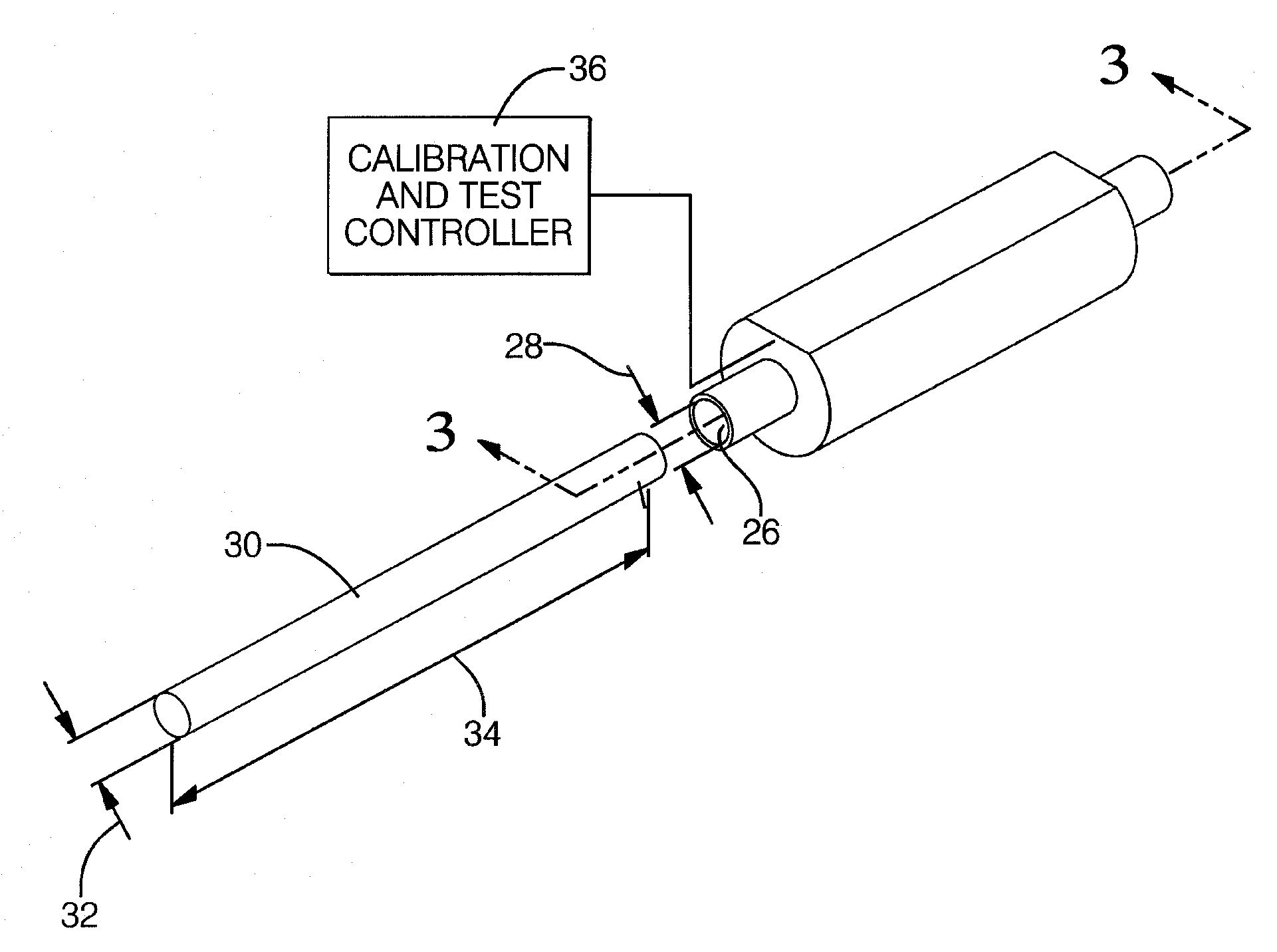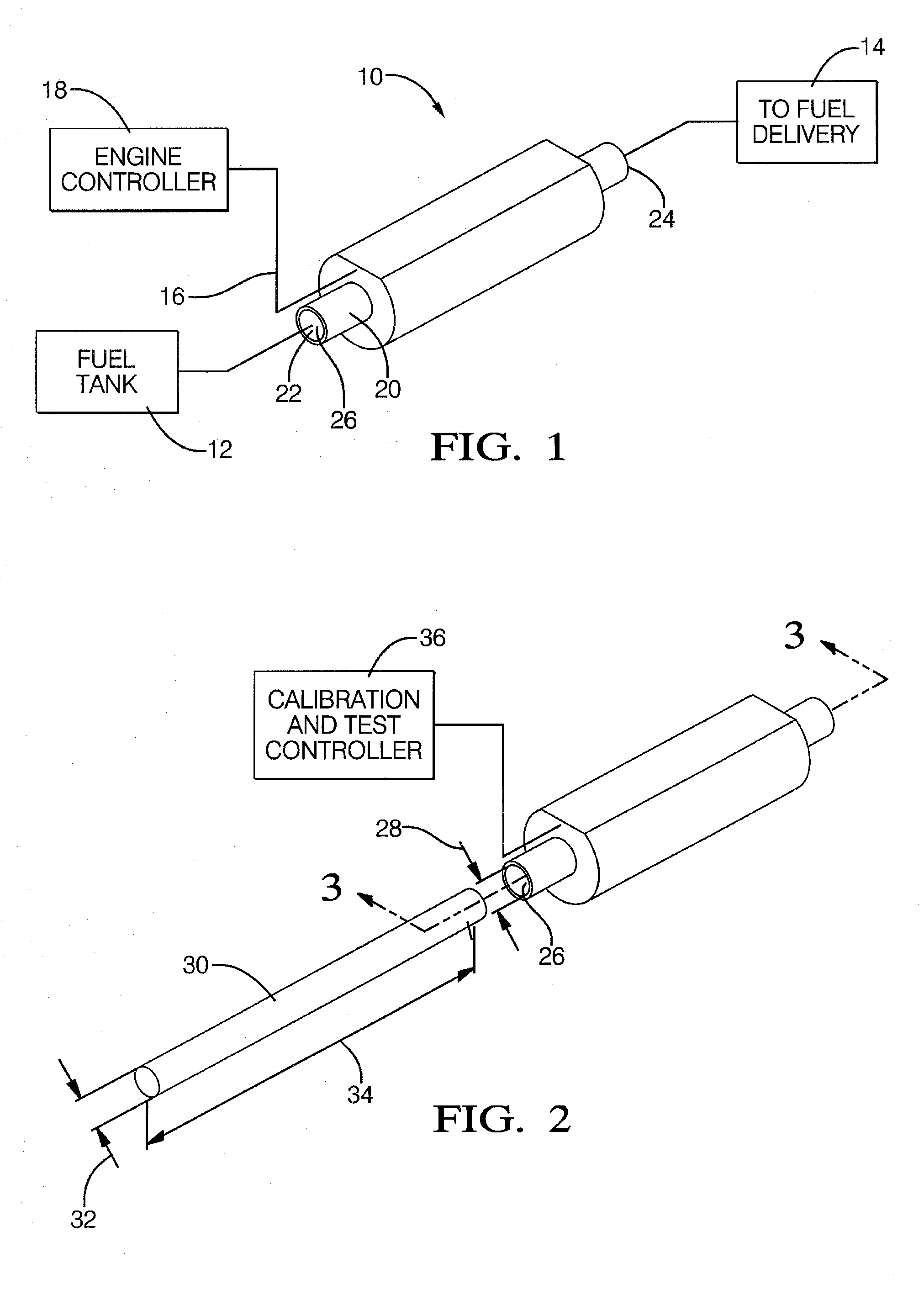Method for testing and calibrating a capacitive flex fuel sensor
a capacitive flex and fuel sensor technology, applied in the field of sensors, can solve the problems of increasing the complexity of the construction of such sensors, reducing the accuracy of the capacitive flex fuel sensor, and increasing the need for accurate flexible fuel sensors, so as to eliminate air gaps and achieve accurate calibration
- Summary
- Abstract
- Description
- Claims
- Application Information
AI Technical Summary
Benefits of technology
Problems solved by technology
Method used
Image
Examples
Embodiment Construction
[0018]Referring now to the drawings wherein like reference numerals are used to identify identical components in the various views, FIG. 1 is a perspective view of a sensing apparatus 10 for sensing one or more properties of a fuel, such as a dielectric constant of a gasoline / ethanol blend. The sensing apparatus 10 (sometimes referred to herein as a “sensor”), as shown, is an in-line type fuel sensing apparatus that is coupled between a source of fuel, such as a fuel tank 12, and a destination, such as various fuel delivery apparatus 14 associated with an automotive vehicle internal combustion engine (not shown). The sensing apparatus 10, generally, includes a pair of sensing plates (not shown) surrounding an inner tube, in a concentric manner, which are connected to a closely-located electrical circuit with signal processing capability so as to generate an output signal 16. The sensing plates around the inner tube will form a capacitor. The material between the plates includes a fi...
PUM
| Property | Measurement | Unit |
|---|---|---|
| dielectric constant | aaaaa | aaaaa |
| dielectric constant | aaaaa | aaaaa |
| dielectric constant | aaaaa | aaaaa |
Abstract
Description
Claims
Application Information
 Login to View More
Login to View More - R&D
- Intellectual Property
- Life Sciences
- Materials
- Tech Scout
- Unparalleled Data Quality
- Higher Quality Content
- 60% Fewer Hallucinations
Browse by: Latest US Patents, China's latest patents, Technical Efficacy Thesaurus, Application Domain, Technology Topic, Popular Technical Reports.
© 2025 PatSnap. All rights reserved.Legal|Privacy policy|Modern Slavery Act Transparency Statement|Sitemap|About US| Contact US: help@patsnap.com



